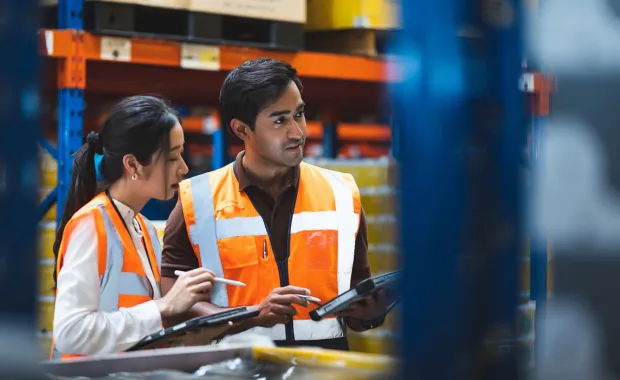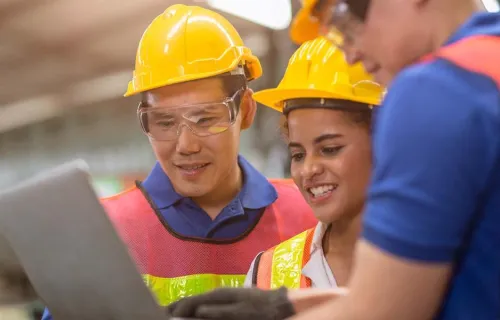In today’s fast-paced and complex business landscape, resilient, sustainable and customer-centric supply chains are crucial for businesses to thrive. An innovative solution that has gained prominence in recent years is the supply chain control tower.
Numerous organizations are implementing supply chain, logistics, or transport control towers. These platforms, equipped with data analytics, provide real-time supply chain visibility to all stakeholders. Despite this trend, very few organizations have positioned these control towers to foster swift and well-informed decision-making at the operational frontline. Moreover, their ability to empower employees and consequently enhance the customer experience remains largely untapped.
Evolution of supply chain control towers
Supply chain control towers originated during the subprime crisis of 2008-2009 as a way for automotive equipment manufacturers to withstand the collapse of the automotive market. Today, they have evolved into critical management tools for organizations facing all kinds of pressure, such as falling demand, raw material shortages, and geopolitical disruptions.
The objective of a supply chain control tower is to align stakeholders, maintain customer service quality, and uphold supply chain performance, especially as companies strive to reduce their working capital requirements.
Initially grounded in lean practices, supply chain control towers have undergone a digital transformation. Today, they use data processing, artificial intelligence (AI), and digital twins to serve as digital command centers, offering visibility, data analytics, simulation, and problem-solving capabilities that drive informed decision-making.
However, beyond improving supply chain operations, a control tower's true strength lies in its capacity to empower employees and enhance the customer experience.
Inextricable link between employer employees and satisfied customers
Customer experience continues to be a critical competitive differentiator for any organization, and employee empowerment is key to driving a superior customer experience. Let’s take a look at why.
Traditionally, organizations have operated using a “top-down” approach. Strategy originates at the top management level, with goals, directives and decisions flowing down to the day-to-day operations level. However, time is a precious commodity in today’s VUCA (short for volatility, uncertainty, complexity, and ambiguity) world. The top-down approach no longer works, especially when employees need to make informed decisions swiftly to minimize delays and disruptions that could negatively impact the customer experience. This is why a supply chain control tower is indispensable in today’s business world.
Detecting, anticipating, and adapting to any situation
A supply chain control tower acts as a nerve center to monitor and manage end-to-end supply chain processes—from procurement, finance and manufacturing to distribution and delivery. As a centralized hub, the control tower facilitates communication among these different teams, breaking down silos and ensuring employees have the right information at the right time to provide the best customer experience.
Moreover, a control tower includes simulation and prediction tools such as machine learning, AI, and digital twins to simulate and test all types of what-if scenarios, consequently improving decision-making through a more informed understanding of the supply chain.
In a recent study, ”Gartner® surveyed 380 supply chain leaders in January 2023 and found that while 60% are piloting or plan to implement a digital supply chain twin (DSCT), just 27% were also planning to incorporate a DToC (Digital Twin of the Customer) as part of their digital strategy.” 1
Further, advanced supply chain control towers progressively learn from root cause analyses, mitigating the risk of recurring errors that frustrate customers. Over time, these towers offer increasingly automated recommendations, freeing up employees to focus even more on customer satisfaction.
Ways a supply chain control tower empowers employees
With a supply chain control tower, employees have more capabilities to deliver a better customer experience. Overall, key ways employees are empowered include the following:
- Enhanced visibility: Better supply chain visibility and transparency empower employees to make more accurate and faster decisions.
- Increased collaboration: Seamless interaction between internal departments and across the supply chain ecosystem (e.g., suppliers, manufacturers, distributors, retailers) results in more responsive and agile operations.
- Improved demand forecasting: With a holistic understanding of the supply chain, supply chain teams can better isolate critical factors that affect demand forecasting.
- Faster and more proactive issue resolution: By anticipating potential issues via simulations and root cause analysis, employees can better address customer service and supply chain performance impacts (inventory, cost, TeqCO2 emissions).
- Simplified sales and operations planning (S&OP): With employees making better decisions closer to the ground, S&OP teams can focus more on mid- to long-term critical issues and use a supply chain digital twin to simulate the impact of S&OP scenarios on supply chain performance.
If you’d like to know more, please contact me. You can also learn more about CGI’s Supply Chain Consulting services.
1Gartner Press Release, “Gartner Survey Shows Just 27% of Chief Supply Chain Officers Plan to Implement a Digital Twin of the Customer,” July 20, 2023.
GARTNER is a registered trademark and service mark of Gartner, Inc. and/or its affiliates in the U.S. and internationally and is used herein with permission. All rights reserved.





